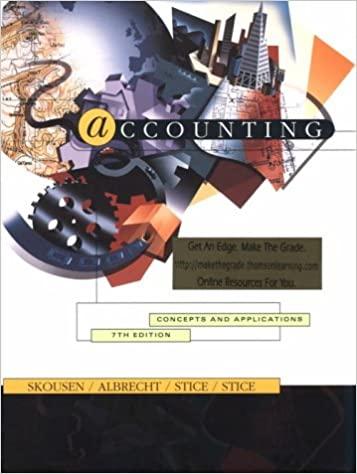
INSTRUCTION: Write the letter T if the statement is true and the letter F if the statement is false. TF 1. Accounting is a service activity whose function is to provide quantitative information about economic entities. TF 2. The records used for the initial recording of business transactions are journals. TF 3. The rules for debit and credit and the normal balances of liabilities are the same as for Capital. TF 4. Special journals are used to record usual and frequent transactions. TF 5. The preparation of work sheet eliminates the need to journalize and post adjusting entries. TF 6. The accounting process consists of the recording phase and reporting phase. TF 7. The purpose of a trial balance is to reconcile subsidiary ledger balances with the general ledger balances. TF 8. Accumulated depreciation is an example of an adjunct account. TF 9. The general ledger includes all accounts appearing in the financial statements, subsidiary ledger provide details in support of certain general ledger balances. TF 10. Entering a debit balance in an account as a credit will cause the trial balance to be out of balance by an amount that is divisible by two (2). TF 11. Adjusting entries are made to correct errors made in the recording phase. TF 12. The entry to record depreciation expense is an example of an adjustment that would be reversed if the reversing entries are made. IF 13. It is sometimes correct for a compound entry's debit totals and credit totals to be unequal. TF 14. The trial balance is used to prepare the statement of comprehensive income while the general ledger is used to prepare the statement of financial position. TF 15. The recording of an accrued expense will always result to an increase in an expense account and a liability account. TF 16. The balances of all the accounts in the general ledger must be closed at the end of the accounting period. IF 17. The asset and liability accounts are known as real accounts. IF 18. The adjusted trial balance is prepared after the financial statements are prepared. IF 19. Owner's equity is the excess of an entity's assets over its liabilities. IF 20. The general ledger account that summarizes the detailed information in a subsidiary ledger is known as control account. TF 21. The balance sheet shows the financial position of a company at a given date. TF 22. The difference between the debit total and the credit total in the statement of financial position section of the work sheet represents theprofit or loss during the period. TF 23. Recording the expiration of a prepaid asset results in the reduction of the asset account and an increase in a related expense account. TF 24. Reversing entries are prepared at the end of the accounting period. TF 25. Since new and revenue accounts will be opened in the subsequent accounting period, it is no longer necessary for an entity to post the closing entries to the accounts in the ledger







